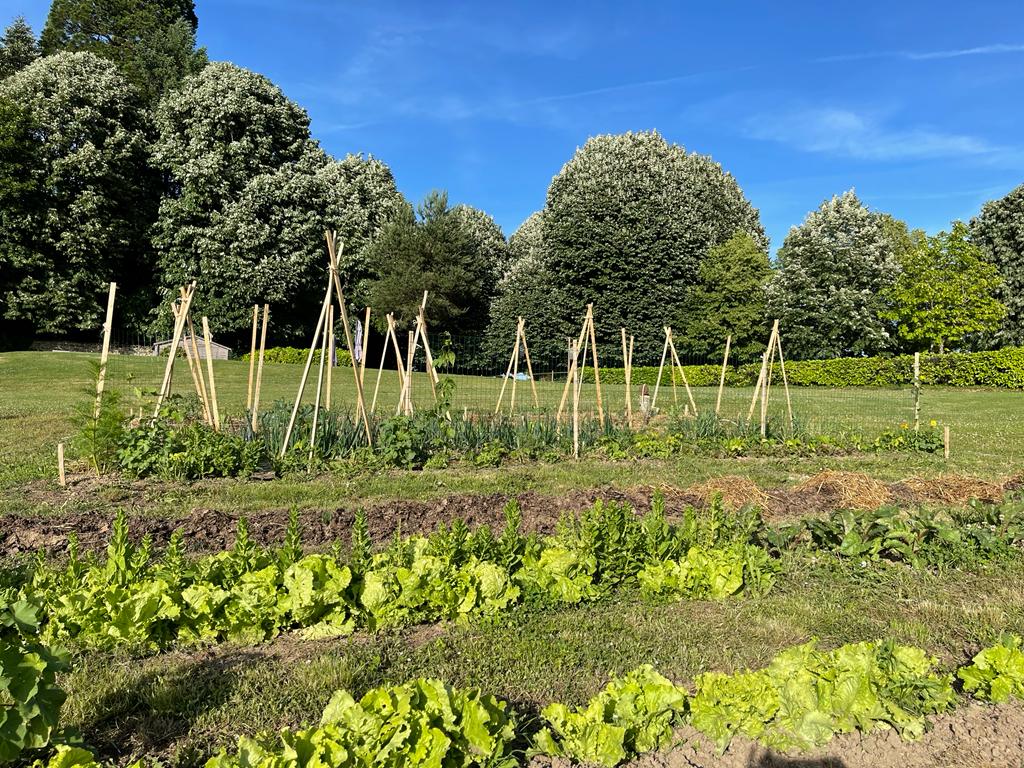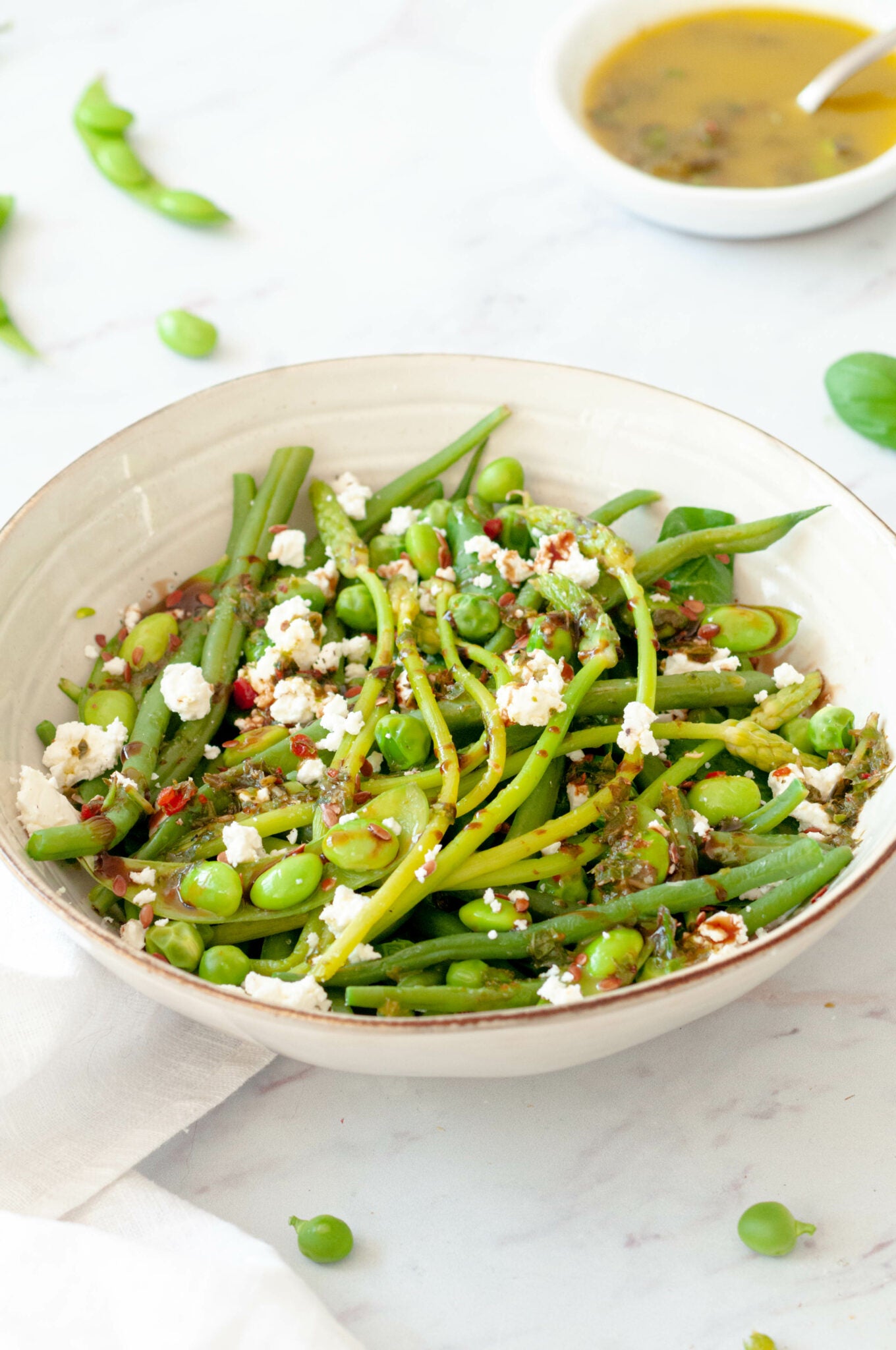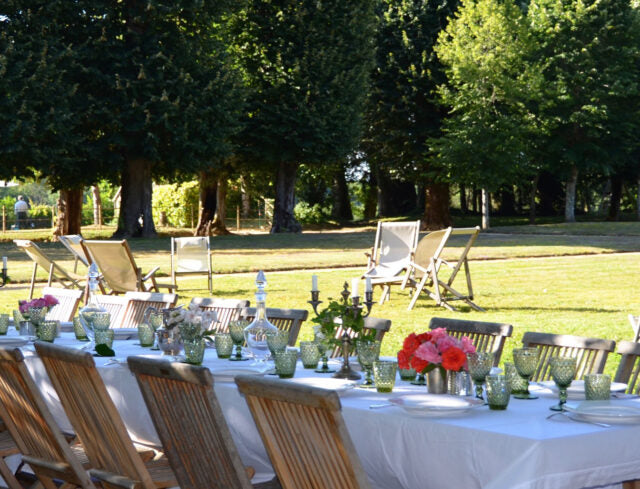
The vegetable garden, land of abundance
Do you know of many ways to recharge your batteries, to get back to basics, to be connected to Nature, to ensure your food autonomy, to contribute to the preservation of the environment, to have before your eyes the miracle of life growing, all this with a lot of scents, flavors, and aestheticism? There is one in any case, it is to cultivate its vegetable garden!

The vegetable garden in history
Its history over the centuries shows that it performed several functions and the first evocation is that of the Garden of Eden , a fruit orchard but also a vegetable garden .
During Antiquity , it was called “ the food space ”, we couldn’t say it better….
In monasteries and among the nobility, it then experienced great popularity because it ensured food autonomy. But not only. It was also a place of pleasure .
In the monastic gardens , medicinal plants grew (the garden of the simple ), market gardens , and in the orchard , vines and fruits . It was also a quasi-sacred place of meditation , with spaces suitable for prayer .
The royal garden, like that of La Quintinie under Louis XIV, supplied the King's table with fruits and vegetables, with rare inventiveness. He performed wonders and invited summer into winter , thanks to techniques such as the use of manure from the royal stables , the placement under shelter and under a bell , the absolute mastery of the exhibitions . He managed to have strawberries in March or asparagus in January!
But the vegetable garden was obviously also present in private homes, because it was not subject to tithing, and above all it made it possible to avoid famine .
It was also the only way to alleviate shortages during periods of war . The workers' gardens thus flourished.
And then… in the 60s, with the industrialization of agriculture , the opening of supermarkets , new ways of consuming , vegetable gardens were no longer fashionable...:-(

The great return of the vegetable garden
The figures speak for themselves, 75% of French people own a vegetable garden, whether it is a large space, a tiny piece of garden , a terrace , even the roof of a building : we count 13 million gardens, and 7 million balconies and terraces (Promojardin).
Even in Paris, on a tiny piece of balcony of one of the TiL sisters, we grow all the aromatic herbs, raspberries, cherry tomatoes and strawberries, that's saying something!
So how can we explain this crazy success? Personal development because it is so rewarding to make life grow , the desire to eat in a healthy, fresh and traceable way (a desire boosted by all the health crises), and economic reasons too because a study shows that ' one euro invested in a vegetable garden brings in 15 !!
Today this nourishing space, rediscovered during confinements as a refuge, a source of wonder and well-being , is coming back in force for better nutrition, respectful of health and the environment because it preserves nature in danger, with methods far removed from any pesticide . Permaculture proves that we can produce in abundance without resorting to chemistry.
The vegetable garden of TiL's domain
In the family estate in Dordogne , birthplace of TiL , the vegetable garden is a huge space, facing south, enclosed by walls and therefore sheltered from the wind, also housing a magnificent 19th century greenhouse where an old vine runs.
There are all kinds of flowers , peonies, lilacs, wisteria, roses, arums, etc., fruit trees , cherry trees, apple trees, pear trees, peach trees, vegetables such as green beans, peas, beans, tomatoes, zucchini, eggplants, salads, aromatic herbs, spinach, radishes, squash, fennel, leeks, potatoes, carrots etc…

Working the soil, the secret of profusion
The vegetable garden is prepared many months in advance because the soil must be worked to offer all its generosity. In our estate, it is “ decompacted ” if necessary to aerate it , and the clods are broken up with a grelinette (our favorite tool, because it is more respectful of the soil than a tiller). Then to fertilize the land , one or two months before sowing, we cover the soil with compost . We use a homemade mixture of manure from our sheepfold or henhouse , straw , dead leaves , grass clippings , waste which is in fact gold mines such as peelings, egg shells, marc of coffee… all organic matter is good to take ! It is what makes the soil fertile, and the more it is nourished, the more it will nourish.
All this rests for several weeks, to the delight of the earthworms which continue the work on their own by aerating the ground , they are fantastic workers ☺. The resulting soil is magnificent, loose, rich and generous , ready to grow little miracles !

Sowing and plantings, choosing the right neighbors
Once the soil is ready, you can start seedlings of flowers and vegetables , prepared beforehand in the greenhouse or planted directly in the ground .
Abundance and diversity are the key words. In nature, there is no void , in a vegetable garden it's the same, vegetables, flowers, herbs come together and each enriches the other , so long live variety and profusion! You just have to respect neighborhood friendships or enmities ☺
For example, planting basil around tomatoes is a natural way to chase away pests that attack tomatoes and mildew. As for the basil, it will grow even better. On the other hand, tomatoes do not like being around potatoes or fennel. Spinach is harmful to beets, beans don't like onions or leeks etc...
In our domaine, we organize the crops in this way, to create a vegetable garden that is as self-regulating as possible. By taking advantage of the virtues of neighbors , each vegetable protects each other against parasites and diseases, and grows even better. Adopting the right associations saves time , but above all allows you to obtain more beautiful and healthy vegetables and to avoid any use of fertilizers, repellents or pesticides .
In fact, Nature is magical!
Harvest time and… cooking time
After having already feasted this year on spinach, radishes, artichokes and salads, as we write this article we are savoring one of our favorite moments, that of zucchini (or squash) flowers ! These beautiful yellow flowers have started to spread on the ground, previously mulched. Prepared in tempura , with an airy, crispy batter, where the melting flowers are nestled, it is an absolute delight ! Also to be made with basil leaves…
We are impatiently waiting for the tomatoes , because this year we have planted 25 different kinds , each with names more evocative than the others, Andean Horned, Black Crimean, Rose de Berne etc., and installed structures resembling teepees for the tomatoes to climb. It is the basis of our many summer recipes , including a tasty vegetable tian, or a wonderful tomato tart.
Yes, we admit… at TiL, we are super greedy , and cooking our meals from our vegetable garden is our favorite summer pastime…
Planting a vegetable garden really means planting seeds of happiness, which do a lot of good for the body and mind. More TiL, there is no such thing as ☺
Seeing a green bean seed grow, even in a small pot in your kitchen, is a life lesson! So, prepare pots and soil, seeds and watering can and watch nature grow, it will reward you so much!



